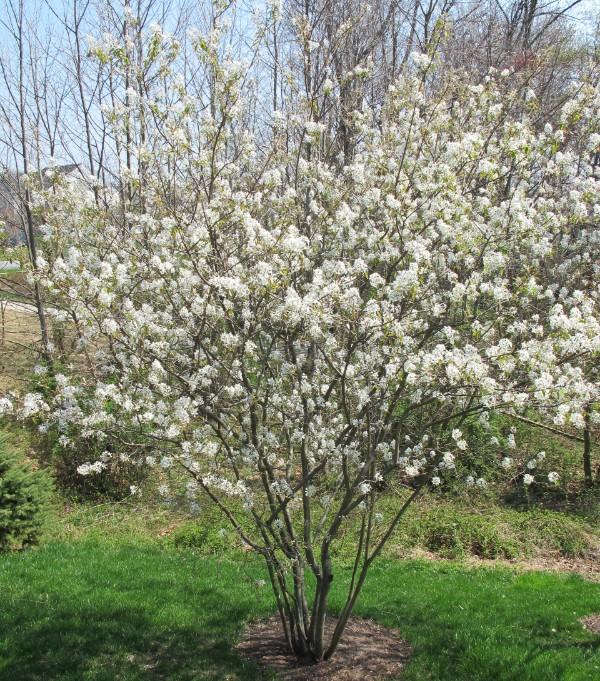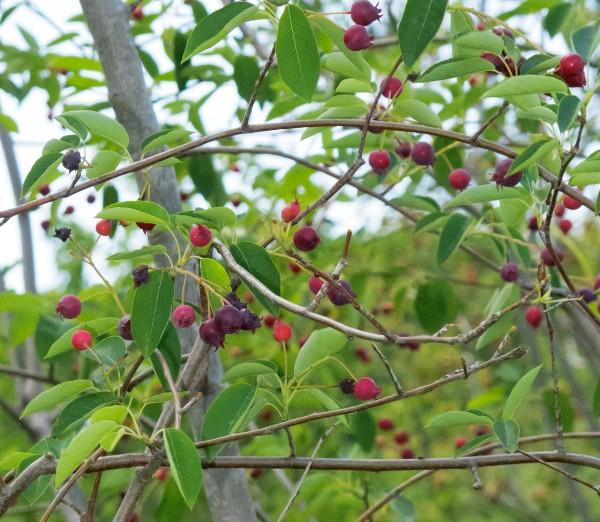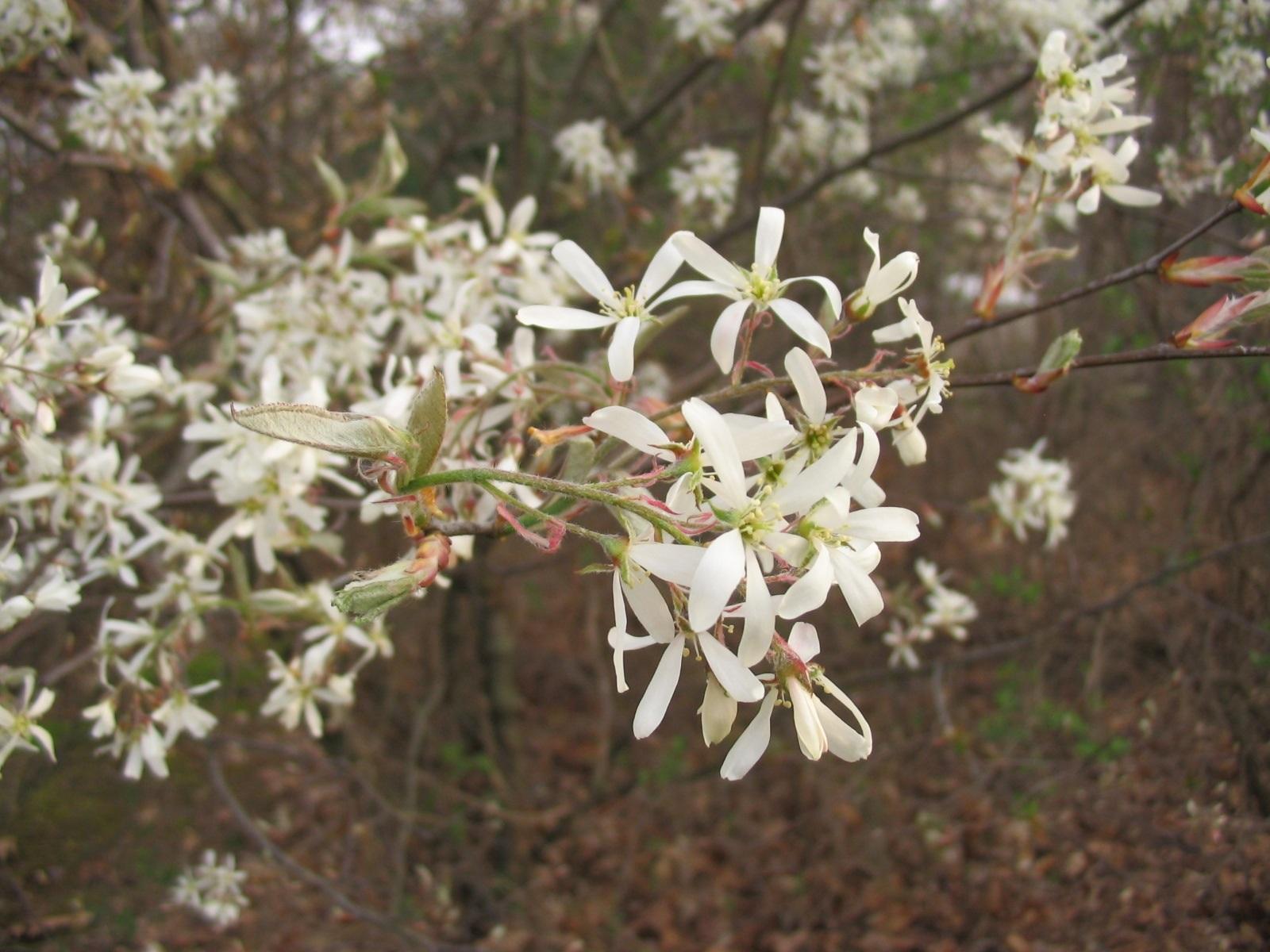About Serviceberry
Amelanchier spp.
Deciduous tree or large shrub
Maryland Distribution: Native habitat varies by species (see below)
Height: 15-25’
Flowers: showy white flowers in late March-April-May
Fall color: yellow, orange, red
Sun: full sun to partial shade
Soil: moist, well-drained, acidic, pH 5.5-7.5
Garden Uses: While there are 13 species of serviceberry documented in Maryland, the most common ones available to home gardeners are:
- Shadblow serviceberry or shadbush (Amelanchier canadensis). This is the most common in Maryland’s three ecoregions: Mountain, Piedmont, and Coastal Plain. Its natural form is a multi-stemmed shrub that spreads by suckering (new stems arise from the root system). It is adapted to all soil textures, including clay and sand.
- Downy serviceberry (Amelanchier arborea) is native to the Piedmont and Mountain regions and grows as a short-trunked small tree or multi-stemmed shrub with a vase-like form.
- Allegheny serviceberry (Amelanchier laevis) is found in the Piedmont and Mountains and is less likely to sucker compared to A. canadensis. Cultivars such as ‘Cumulus’ and ‘Snowcloud’ have good potential for street tree use.
- Apple serviceberry (Amelanchier x grandiflora) is a hybrid cross between A. arborea and A. laevis. A widely available cultivar, A. x grandiflora ‘Autumn Brilliance’, is noted for its outstanding orange to red autumn color.
Serviceberry species can be difficult to distinguish from one another. All are fine choices for gardens and landscapes where a small tree or large shrub is desired. In general, serviceberries have attractive early spring flowers, edible fruits (similar to blueberries), and brilliant orange-red foliage colors in autumn. This is an excellent alternative to the invasive ‘Bradford’ callery pear. They are among the earliest-flowering spring trees.

Serviceberries are susceptible to cedar-quince rust disease, which can render the fruits inedible for people (but still useful for wildlife). They are also susceptible to fire blight, occasionally. Disease severity varies from year to year, in part due to weather conditions. Lace bugs and spider mites sometimes can be a problem also.
Wildlife: Serviceberries are highly valuable to native wildlife. The early flowers provide pollen and nectar to a variety of native bees and other beneficial insects such as syrphid flies and tachinid flies (which are good predators of pests). The berries provide food for a variety of bird species including American Robins, Baltimore Orioles, Cedar Waxwings, and Gray Catbirds. Serviceberries are a host plant for a variety of moths, which, in their caterpillar form, provide essential food for young birds.

References
Dirr, Michael. 1998. Manual of Woody Landscape Plants: Their Identification, Ornamental Characteristics, Culture, Propagation and Uses, Fifth Edition.
Slattery, Britt E., et. al. 2005. Native Plants for Wildlife Habitat and Conservation Landscaping, U.S. Fish & Wildlife, Chesapeake Bay Field Office, Annapolis, MD. 82 pp.
